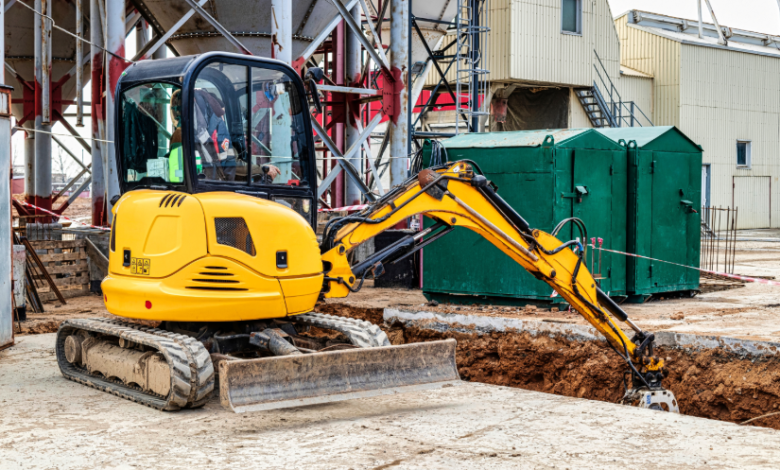Dig Trench Safely and Efficiently for Construction Projects

Dig trench involves creating a narrow, elongated excavation in the ground, typically for installing utilities, drainage, or foundations. The key to a successful trench is understanding the purpose, soil type, and safety requirements before starting the work. Proper planning ensures efficiency and prevents complications like cave-ins or improper drainage.
Whether digging by hand or using machinery, selecting the right tools and techniques is essential. For small projects, a shovel or mattock can be sufficient, while larger or deeper trenches require careful support and protective measures to ensure safety and stability.
How to Dig a Trench
Digging a trench requires careful planning, use of proper tools, and attention to safety and soil management. The process involves selecting and preparing the site before following an organized digging approach to ensure accurate depth and alignment.
Tools and Equipment Needed
Essential tools for digging a trench by hand include a trenching shovel, which has a narrow blade suited for precise digging. A pick mattock or hoe helps break up hard or compacted soil. Measuring devices like a tape measure and string line with stakes assist in marking the trench’s exact path and depth.
A wheelbarrow or tarp is helpful for moving or storing excavated soil. Wearing work gloves, sturdy boots, and eye protection is necessary to prevent injury. If the soil is very rocky or clay-heavy, additional tools such as a mattock or pickaxe will speed up the process.
Site Preparation and Safety
Before digging, the site must be surveyed for underground utilities and obstructions. Contact local services to mark any buried cables or pipes. Clear vegetation, rocks, and debris along the trench line.
Mark the trench path with stakes and string for consistent width and direction. Check the soil type to anticipate digging difficulty—loose sandy soil is easier than dense clay. Maintain a clear, stable work area and ensure no heavy equipment is to be used nearby during manual digging.
Safety measures include wearing protective gear and being mindful of trench stability. Avoid digging trenches deeper than 4 feet without proper shoring or assistance to prevent collapses.
Step-by-Step Digging Process
The first step is outlining the trench with string and stakes based on measurements. Use the trenching shovel to break ground along this line, removing a thin layer of topsoil first.
Dig downward and outward to create a trapezoidal trench cross-section that prevents side collapse. Keep the trench bottom straight and smooth to allow proper drainage or pipe laying.
Remove excavated soil regularly to avoid working in a confined space. Check depth frequently with a tape measure to maintain consistency. For drainage trenches, ensure the bottom has a slight slope to direct water flow.
See also: How KYC Services Help Businesses Prevent Fraud and Build Customer Trust
Soil Disposal and Management
Lay out a plan for managing the excavated soil before digging begins. Use a tarp or wheelbarrow to temporarily hold soil removed from the trench, preventing it from falling back in.
If the soil is healthy topsoil, consider saving it for landscaping or garden use. Remove rocks and roots from soil piles to ease later handling. Avoid placing excess soil too close to trench edges, as weight may cause walls to collapse.
Distribute soil evenly or haul it away if large volumes accumulate. For long trenches, space soil piles at intervals following safety guidelines to maintain clear walkways.
Trenching Methods and Best Practices
Effective trenching requires choosing the right method based on project scale and soil conditions. Proper technique and maintenance ensure safety and functionality. Each approach has considerations for equipment, soil management, and final trench stability.
Manual vs Mechanical Trenching
Manual trenching is suitable for small, precise jobs or locations inaccessible to machines. Tools like trenching shovels, pick mattocks, and hoes help control depth and shape. It’s labor-intensive and slower but allows for careful excavation around utilities or roots.
Mechanical trenching uses equipment such as backhoes, trenchers, or auger drills. These machines increase speed and efficiency, especially for larger or deeper trenches. Operators must assess the soil type and existing infrastructure before starting to avoid damage.
Safety differs by method. Manual work requires more physical caution, while mechanical trenching demands skilled equipment operation and clear site marking. Choosing between them depends on project size, accessibility, and soil characteristics.
Dealing with Different Soil Types
Soil type affects trench stability and excavation approach. Clay-heavy soils retain moisture, becoming slippery and prone to collapse, so shoring or trench boxes are necessary to prevent cave-ins.
Sandy soils drain well but don’t compact firmly. Trenches in sandy conditions often need more frequent inspection and reinforcement. Wet or loose soil layers increase the risk of excavation accidents.
Testing soil moisture and composition before digging helps determine required protective measures. Adjusting slope angles and support systems based on soil type improves safety and longevity of the trench.
Trench Maintenance and Backfilling
Maintaining a trench requires monitoring for signs of instability like cracks or soil shifts. Workers need clear entrance and exit routes for safety.
Backfilling should be done in layers using suitable material to prevent future settlement or collapse. Compaction after each layer is vital to maintain trench integrity and avoid voids.
Unused utility lines or debris must be cleared before backfilling to avoid obstruction. Proper backfilling ensures the trench serves its purpose and reduces risk for future surface damage.





